COVERs
Journals covers
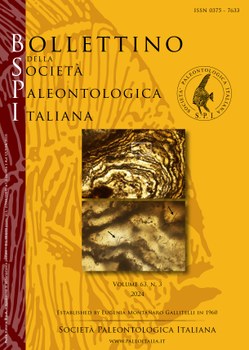
Utilising a multi-analytical approach, we investigated centimetre-scale domical and tabular microstromatolitic encrustations from Lake Abhe, a hyperalkaline and hypersaline environment in the Afar Rift, Djibouti. We explored the complex interactions between microorganisms and sediments, alongside the preservation potential of microfossils in this extreme setting. Using optical and scanning electron microscopy, we found that the microstromatolitic crusts exhibit both abiogenic and biogenic characteristics and fabrics, influenced by the mixing of lacustrine and hydrothermal fluids and microbial activity. Microcolumnar fabrics, composed of micrite and microsparite laminae, likely formed in calm, supersaturated water conditions and were mediated by microbial mineralisation. Crystalline fabrics, on the other hand, appear to originate from inorganic processes, followed by early diagenetic growth of larger crystals of Mg-calcite. Filamentous cyanobacterial sheaths, preserved within the crusts and often perpendicular to laminations, suggest a photosynthetic growth mode. Extracellular polymeric substances played a key role in microbial carbonate formation by providing nucleation sites for mineral precipitation and anchoring microbes to their substrates. Raman microspectroscopy reveals a concentration of carbonaceous materials within the carbonate matrix; these are closely associated with filamentous sheaths, suggesting their biological origin. The preservation of these biogenic components is also linked to the presence of Mg-bearing silicates, which are likely tied to microbial activity and high pH conditions, consistent with observations in other alkaline lacustrine systems. This study offers insights into microbial carbonate formation and biosignature preservation in extreme alkaline environments, contributing to our understanding of early Earth microbial ecosystems.
Dorneles V.A.C., Hickman-Lewis K., Barbieri R., Caminiti A.M. & Cavalazzi B. (2024). Microbe-mineral interactions in the microstromatolitic crusts of the lacustrine chimneys and volcanic bedrock of Lake Abhe, Republic of Djibouti. Bollettino della Società Paleontologica Italiana, Vol. 63 (3), pp. 229-244. doi: 10.4435/BSPI.2024.17
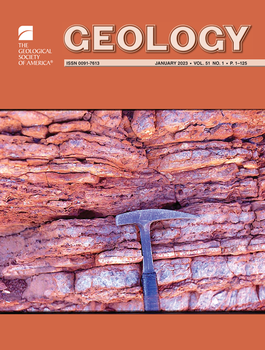
Paleoarchean stromatolites are among the oldest compelling evidence for life. We present advanced two- and three-dimensional (2-D and 3-D) reconstructions of the morphology, mineralogy, trace element geochemistry, and taphonomy of permineralized stromatolites from the lowermost horizons of the ca. 3.5 Ga Dresser Formation, Pilbara, Western Australia. Rare earth element plus yttrium compositions suggest a restricted paleodepositional setting influenced by marine influxes; this contrasts with other Dresser stromatolites, which developed around terrestrial hot springs. Mineral phase relationships and positive Eu anomalies denote syndepositional hydrothermal influence and silicification promoting high-fidelity microstructural preservation. Although no primary kerogen is preserved, numerous 2-D and 3-D morphological characteristics denote a biogenic origin, including the onlap of sedimentary layers onto stromatolitic topography, fine-scale undulatory laminations, non-isopachous laminations with crestal thickening, laminoid fenestrae, and subvertical pillar-like fabrics interpreted as microbial palisade structure; these features suggest that the stromatolite ecosystem was dominantly phototrophic. The deep iron-rich weathering profile of the Dresser stromatolites makes them pertinent analogues for potential microbialites in altered carbonates on Mars. Were similar putative biogenic macro-, meso- and micromorphologies identified in habitable Martian settings by rover imaging systems, such materials would be compelling targets for sample return.
Hickman-Lewis, K., Cavalazzi, B., Giannoukos, K., D'Amico, L., Vrbaski, S., Saccomano, G., ... & Westall, F. (2023). Advanced two-and three-dimensional insights into Earth's oldest stromatolites (ca. 3.5 Ga): Prospects for the search for life on Mars. Geology, 51(1), 33-38.
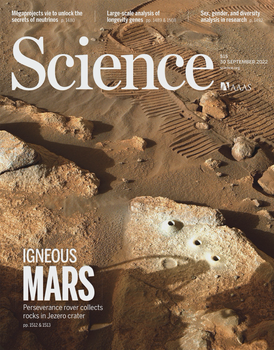
The Perseverance rover landed in Jezero crater, Mars, to investigate ancient lake and river deposits. We report observations of the crater floor, below the crater’s sedimentary delta, finding that the floor consists of igneous rocks altered by water. The lowest exposed unit, informally named Séítah, is a coarsely crystalline olivine-rich rock, which accumulated at the base of a magma body. Magnesium-iron carbonates along grain boundaries indicate reactions with carbon dioxide–rich water under water-poor conditions. Overlying Séítah is a unit informally named Máaz, which we interpret as lava flows or the chemical complement to Séítah in a layered igneous body. Voids in these rocks contain sulfates and perchlorates, likely introduced by later near-surface brine evaporation. Core samples of these rocks have been stored aboard Perseverance for potential return to Earth.
Farley, K. A., Stack, K. M., Shuster, D. L., Horgan, B. H. N., Hurowitz, J. A., Tarnas, J. D., ... & Hickman-Lewis, K. (2022). Aqueously altered igneous rocks sampled on the floor of Jezero crater, Mars. Science, 377(6614), eabo2196.
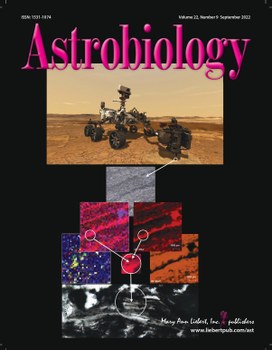
The NASA Mars 2020 Perseverance rover is currently exploring Jezero crater, a Noachian–Hesperian locality that once hosted a delta–lake system with high habitability and biosignature preservation potential. Perseverance conducts detailed appraisals of rock targets using a synergistic payload capable of geological characterization from kilometer to micron scales. The highest-resolution textural and chemical information will be provided by correlated WATSON (imaging), SHERLOC (deep-UV Raman and fluorescence spectroscopy), and PIXL (X-ray lithochemistry) analyses, enabling the distributions of organic and mineral phases within rock targets to be comprehensively established. Herein, we analyze Paleoarchean microbial mats from the ∼3.42 Ga Buck Reef Chert (Barberton greenstone belt, South Africa)—considered astrobiological analogues for a putative ancient martian biosphere—following a WATSON–SHERLOC–PIXL protocol identical to that conducted by Perseverance on Mars during all sampling activities. Correlating deep-UV Raman and fluorescence spectroscopic mapping with X-ray elemental mapping, we show that the Perseverance payload has the capability to detect thermally and texturally mature organic materials of biogenic origin and can highlight organic–mineral interrelationships and elemental colocation at fine spatial scales. We also show that the Perseverance protocol obtains very similar results to high-performance laboratory imaging, Raman spectroscopy, and μXRF instruments. This is encouraging for the prospect of detecting microscale organic-bearing textural biosignatures on Mars using the correlative micro-analytical approach enabled by WATSON, SHERLOC, and PIXL; indeed, laminated, organic-bearing samples such as those studied herein are considered plausible analogues of biosignatures from a potential Noachian–Hesperian biosphere. Were similar materials discovered at Jezero crater, they would offer opportunities to reconstruct aspects of the early martian carbon cycle and search for potential fossilized traces of life in ancient paleoenvironments. Such samples should be prioritized for caching and eventual return to Earth.
Hickman-Lewis, K., Moore, K. R., Hollis, J. J. R., Tuite, M. L., Beegle, L. W., Bhartia, R., ... & Cavalazzi, B. (2022). In situ identification of Paleoarchean biosignatures using colocated Perseverance Rover analyses: Perspectives for in situ Mars science and sample return. Astrobiology, 22(9), 1143-1163.
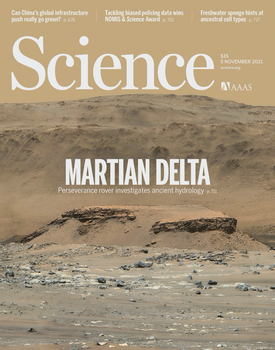
Observations from orbital spacecraft have shown that Jezero crater on Mars contains a prominent fan-shaped body of sedimentary rock deposited at its western margin. The Perseverance rover landed in Jezero crater in February 2021. We analyze images taken by the rover in the 3 months after landing. The fan has outcrop faces, which were invisible from orbit, that record the hydrological evolution of Jezero crater. We interpret the presence of inclined strata in these outcrops as evidence of deltas that advanced into a lake. In contrast, the uppermost fan strata are composed of boulder conglomerates, which imply deposition by episodic high-energy floods. This sedimentary succession indicates a transition from sustained hydrologic activity in a persistent lake environment to highly energetic short-duration fluvial flows.
Mangold, N., Gupta, S., Gasnault, O., Dromart, G., Tarnas, J. D., Sholes, S. F., ... & Hickman-Lewis, K. (2021). Perseverance rover reveals an ancient delta-lake system and flood deposits at Jezero crater, Mars. Science, 374(6568), 711-717.
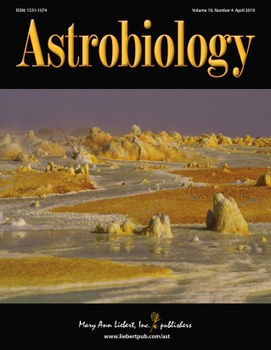
The Dallol volcano and its associated hydrothermal field are located in a remote area of the northern Danakil Depression in Ethiopia, a region only recently appraised after decades of inaccessibility due to severe political instability and the absence of infrastructure. The region is notable for hosting environments at the very edge of natural physical-chemical extremities. It is surrounded by a wide, hyperarid salt plain and is one of the hottest (average annual temperatureDallol: 36–38°C) and most acidic natural systems (pHDallol ≈0) on Earth. Spectacular geomorphologies and mineral deposits produced by supersaturated hydrothermal waters and brines are the result of complex interactions between active and inactive hydrothermal alteration of the bedrock, sulfuric hot springs and pools, fumaroles and geysers, and recrystallization processes driven by hydrothermal waters, degassing, and rapid evaporation. The Dallol area represents an excellent Mars analog environment given that the active volcanic environment, the associated diffuse hydrothermalism and hydrothermal alteration, and the vast acidic sulfate deposits are reminiscent of past hydrothermal activity on Mars. The work presented in this paper is an overview of the Dallol volcanic area and its hydrothermal field that integrates previous literature with observations and results obtained from field surveys and monitoring coupled with sample characterization. In so doing, we highlight its exceptional potential as a planetary field analog as well as a site for future astrobiological and exploration programs.
Cavalazzi, B., Barbieri, R., Gómez, F., Capaccioni, B., Olsson-Francis, K., Pondrelli, M., ... & Hickman-Lewis, K. (2019). The Dallol geothermal area, Northern Afar (Ethiopia)—An exceptional planetary field analog on Earth. Astrobiology, 19(4), 553-578.
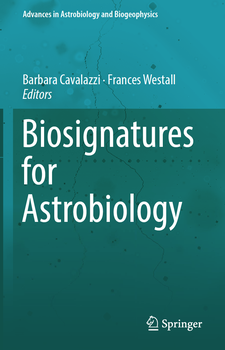
This book on Biosignatures for Astrobiology has had a long germination. It started with an article that we wrote on Biosignatures in Rocks for the Encyclopedia of Geobiology published by Springer in 2009, and early suggestions from Ramon Khanna at the 13th meeting of European Astrobiology Network Association (EANA) in 2013 hosted in Edinburgh. With the ongoing Mars Science Laboratory Mission to Gale Crater and the ExoMars Trace Gas Orbiter (2016) and lander/rover (2020), as well as the future JUICE and Europa Clipper Mission to Jupiter and its satellites and the various telescopes (HUBBLE, Spitzer, Kepler, TESS, JWST, WFIRST) searching for exoplanets, the time is appropriate to review biosignatures of relevance for astrobiology, addressing all aspects of the discipline. Our book thus aims at capitalising on the latest advances to provide overviews in all the domains of astrobiology. Since the paradigm-changing discovery of the first exoplanet orbiting a mainsequence star and the finding of highly controversial biosignatures in the Martian meteorite ALH84001 by David McKay and his colleagues in 1996, biosignature research across the board in astrobiology has made enormous advances. Whether or not ALH84001 or other Martian meteorites harbour traces of life, the very idea that microbial fossils could be preserved in a meteorite from Mars sparked a huge interest in biosignature research covering the minimum size of microorganisms, extremophiles, through to the fossilised traces of life, and astrobiology missions to Mars.
Cavalazzi, B., & Westall, F. (Eds.). (2019). Biosignatures for astrobiology. Berlin/Heidelberg, Germany: Springer.
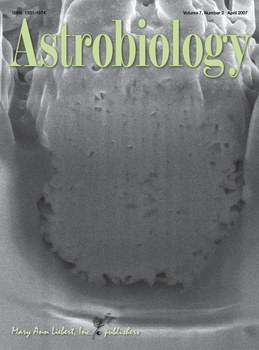
The biologic origin of objects with microbe-like morphologies from the oldest preserved terrestrial sedimentary rocks remains a matter of controversy. Their biogenicity has been questioned, as well as the claim that they are convincing evidence of early life. Though minerals with microbe-like morphologies represent ambiguous evidence of life, they are, in a number of conditions, the only achievable information. In this study, the focused ion beam (FIB) electron microscopy technique was used for nano and micrometer-scale high-resolution imaging and in situ microsectioning of filamentous microfossils. The structural elements of these filaments, their spatial relationships with the host rock, and artifacts produced by alteration of the original morphology due to laboratory sample processing have been clearly defined. The in situ sectioning provided a means by which to investigate surface and subsurface microstructures and perform different analytical techniques on the same object, which minimizes sample destruction and avoids excessive manual handling and exposure of the specimen during analysis. Improvement in the morphological and compositional evaluation of the filaments has facilitated the development of a hypothesis regarding the metabolic pathway of the filamentous microfossils preserved in the Middle Devonian-aged Hollard Mound deposit, Anti-Atlas, Morocco. The results of this study demonstrate the potential of the FIB/SEM (scanning electron microscopy) system for detecting microbial-scale morphologies.
Cavalazzi, B. (2007). Chemotrophic filamentous microfossils from the Hollard Mound (Devonian, Morocco) as investigated by focused ion beam. Astrobiology, 7(2), 402-415.